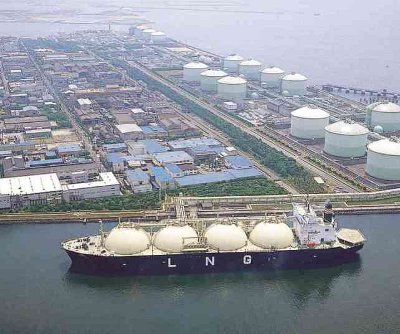In what will no doubt be seen as a welcome development by the American gas sector, the U.S. government issued its approval for natural gas exports from a third facility, to be situated in Lake Charles, Louisiana.
 It’s a conditional license, to be sure, but it signals that the government is aware of the hefty backlog of such export projects that it still needs to work through. The terminal in question, reports Reuters, is a product of BG Group Plc (LSE: BG) and Energy Transfer Partners LP’s (NYSE: ETP) Southern Union Co.
It’s a conditional license, to be sure, but it signals that the government is aware of the hefty backlog of such export projects that it still needs to work through. The terminal in question, reports Reuters, is a product of BG Group Plc (LSE: BG) and Energy Transfer Partners LP’s (NYSE: ETP) Southern Union Co.
Per the approval, the facility can now send out up to 2 billion cubic feet of natural gas per day for a 20-year period. This depends, of course, on the Federal Energy Regulatory Commission signing off on the facility’s construction.
Including this project, the U.S. is now able to export as much as 5.6 billion cubic feet per day. But that’s just 8 percent of the gas we’re producing daily, and it is nowhere near adequate to assuage the rising demand for exports or other transport options.
The project that received approval before this one was Freeport LNG’s Quintana Island, Texas facility. And before that, no decisions were unveiled for a two-year period, during which time the government undertook a detailed study of the implications of going ahead with exporting American natural gas. The first such project that received approval, all the way back in 2011, was Cheniere’s (NYSE: LNG) Sabine Pass terminal.
The issue is certainly a complicated one. On the one hand, we’re enjoying record-low prices for gas. In fact, prices are so low that gas producers are finding it difficult to keep production operations going. On the other hand, there is heavy demand for gas from Eastern nations. Any gas exports to nations not under free-trade agreements with the U.S. require permission from the Energy Department.
If operators and developers are able to set up export agreements with nations around the world, it would definitely ease the gas glut (thus raising prices to levels where gas operators find it worthwhile again). More importantly, it would relieve the serious flaring problem we’ve got going on here.
Flaring and the Future
Take the Bakken shale in North Dakota, for example. We’re flaring $100 million of natural gas every month simply because there isn’t enough infrastructure to transport the gas. As I said, prices are so low that operators just keep seeing natural gas as a profit-less avenue, but we lack the pipeline and export infrastructure that could actually put all this gas to meaningful use.
Even if the U.S. now has so much gas that it’s become ridiculously cheap, on an international level, natural gas is still a very valuable and useful commodity. The ongoing shale boom won’t last forever. There is just no way we can afford to keep flaring off gas at present rates.
Our analysts have traveled the world over, dedicated to finding the best and most profitable investments in the global energy markets. All you have to do to join our Energy and Capital investment community is sign up for the daily newsletter below.
This is why companies like Cheniere Energy (NYSE: LNG) are working to secure agreements for liquefied natural gas (LNG) with Asian countries like Japan, India, and South Korea. And that’s also why it’s imperative that more natural gas export terminals be approved by the federal government.
But there is a flip side to that, too. Exporting natural gas in large volumes will inevitably raise domestic prices. In the short term, that would be a good thing; it would raise prices back up to levels where operators will find it worth pursuing natural gas projects. But in the longer term, it would raise gas prices beyond that level, making American natural gas expensive all over again.
Production from shale, after all, can’t keep going at unsustainable rates. That’s why companies like Dow Chemical (NYSE: DOW) are opposed to export options. FuelFix quotes America’s Energy Advantage, a lobby group of which Dow is a part:
“Each permit approval brings us closer to the point that would begin to harm the manufacturing renaissance.”
LNG is definitely going to be a growing market, especially in the Eastern world, and it’s something you should keep a close eye on. Meanwhile in the U.S., at least in the near future, it’s hard to see the opposition to gas export terminals gaining any serious ground, so expect more terminals to be approved.
If you liked this article, you may also enjoy:




